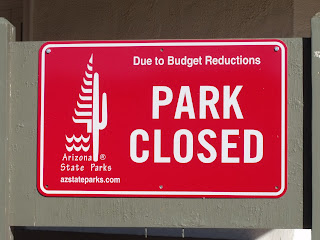(Second of two parts on virtual fence, new and proposed.)
Before rushing ahead with another high-tech fix for our so-called “border
security,” the Obama administration should take a hard look at the conceptual
and strategic failures of the SBInet.
It wasn’t just technical glitches and
management shortcomings that doomed
SBInet.
A series of blistering reports from DHS’ own inspector general and the
Government Accountability Office, as well as a barrage of criticism from the
various congressional committees that oversee DHS, warned that SBInet was a bust. The
reports noted that Border Patrol never offered any clear definition of the
project, a credible price estimate or strategic plan. (See: Fallacies of High-Tech Fixes for Border Security.)
The “system of systems” was plagued by cost overruns, technical glitches, and
repeated schedule delays.
Typical of
the abstract language describing the SBInet concept, DHS said it represented “a
systematic approach to deploy technological tools in stages, allowing each
stage to build on the success of earlier stages.” And the objective is “to
provide a clear common operating picture (COP) of the border environment within
a command center environment, which will provide commonality within DHS
components and interoperability with stakeholders outside DHS.”
In the end, DHS concluded that “the original concept for SBInet does not meet current standards
for viability and cost-effectiveness” and that the “SBInet system is not the
right system for all areas of the border and it is not the most cost-effective
approach to secure the border.”
According to
DHS, the “independent, quantitative, science-based assessment of the SBInet
program” that it commissioned “demonstrated that SBInet is not the most
efficient, effective and economical way to meet our nation's border security
needs.”
No doubt. As any observer knew, SBInet was shot through with flaws – the least of which were technological – from its start in November 2005.
No doubt. As any observer knew, SBInet was shot through with flaws – the least of which were technological – from its start in November 2005.
The Napolitano-mandated
assessment, according to DHS, concluded that SBInet did not “have the
capability to provide a one size fits all integrated technological solution to
border security.” DHS reported that SBInet
research and development “generated some advancements in technology,” but,
rather than seeking new technological platforms, DHS will in the immediate
future “utilize existing, proven technology solutions tailored to the distinct
terrain and population density of each border region.”
The scandal
of insider contracts, scant oversight, and technological failure in electronic
surveillance on the border predates SBInet.
Between 1997 and 2006, the Department of Justice (DOJ) and DHS spent
$439 million on two electronic surveillance projects that were largely
abandoned because of system failures.
These were
the Integrated Surveillance Intelligence System (ISIS) and its successor,
America’s Shield Initiative. The General Services Administration and DHS’s Office
of Inspector General OIG issued blistering reports about ISIS and America’s
Shield, prefiguring more recent governmental critiques of SBInet.
New High-Tech Solution Moves Forward
Without Sufficient Consideration
DHS says
that the new search for a high-tech solution for border security “recognizes
that we must effectively deploy a wide range of proven technology along the
Southwest border to best meet our nation’s pressing border technology needs and
complement this administration’s unprecedented investment in manpower,
infrastructure and resources to secure the Southwest border.”
It should be
remembered that, as DHS presses forward with its new border technology plan, SBInet
was also initially scheduled to use only proven, off-the-shelf technology. Boeing
did attempt to cobble together different systems into one system, but little
worked as planned.
Then, when
it tried to create a unique technology platform, Boeing had little success. The
system couldn’t distinguish between a person and a bush swaying in the wind. It
didn’t get close to establishing a common operating picture for the Border
Patrol.
As it moves quickly
toward a new high-tech plan, DHS hasn’t acknowledged that its “system of systems”
had underlying systemic flaws – namely, the failure of DHS to focus on real security
threats, the outsourcing of border security projects (including its oversight
and management) to private contractors, and the failure of DHS to submit the hugely
expensive project (projected $8 billion) to a cost-benefit assessment. Such an assessment would attempt to measure the margin of increased security resulting from new border security programs against their cost.
If DHS doesn’t
change its ways (and it has said or done little to indicate any change in
operations) then the newly initiated high-tech plan for border security will
surely end like its predecessors – monuments to fallacies of high-tech
solutions to challenges of managing our border with Mexico.
For more information see:
CIP
International Policy Report: Fallacies of
High-Tech Fixes for Border Security, April 2010



